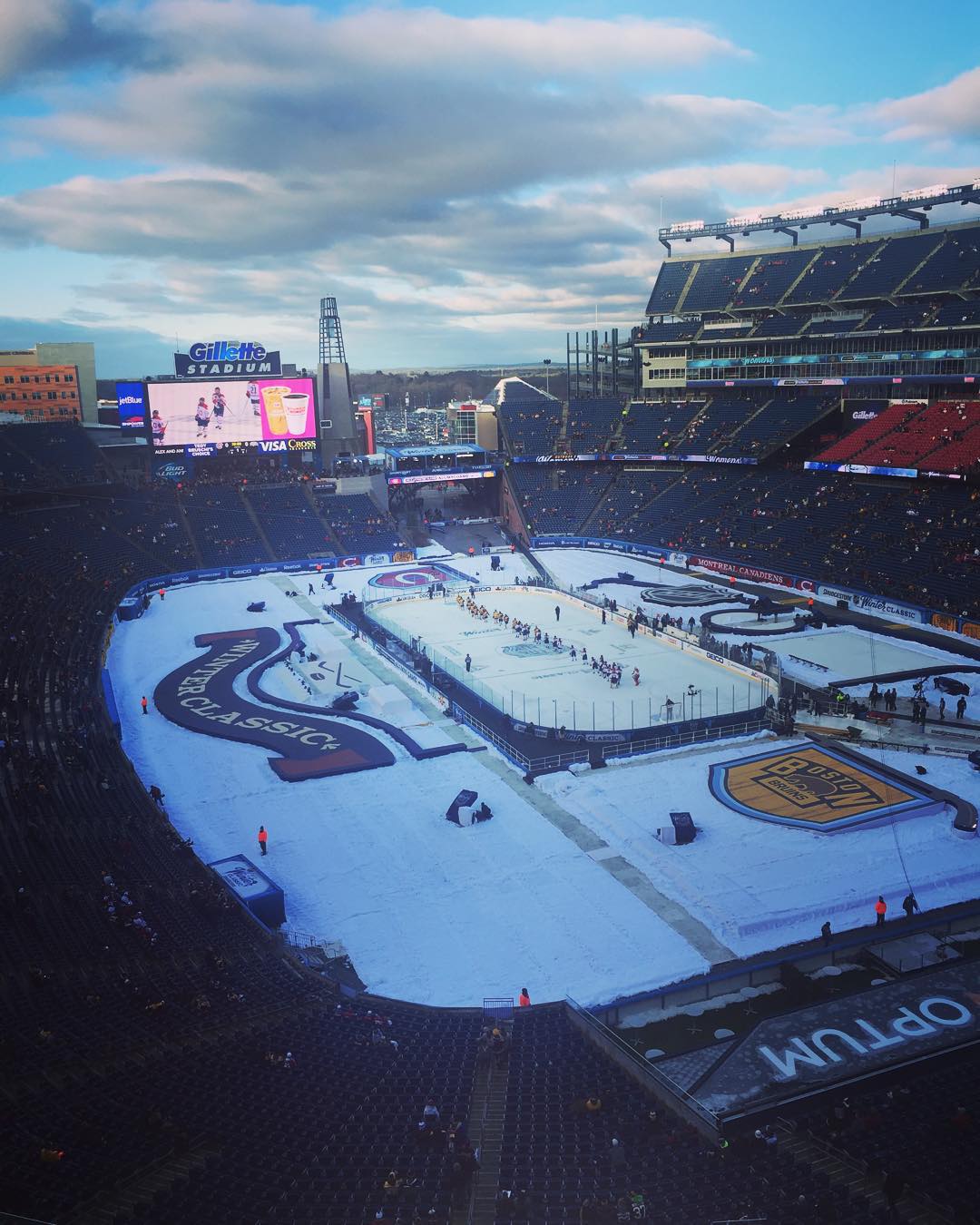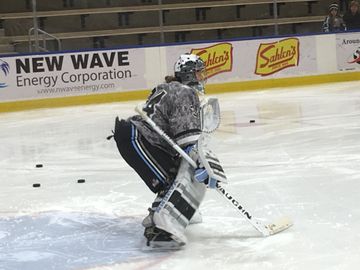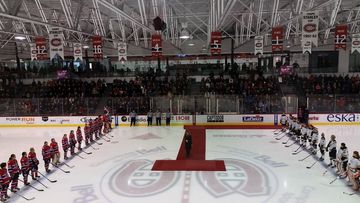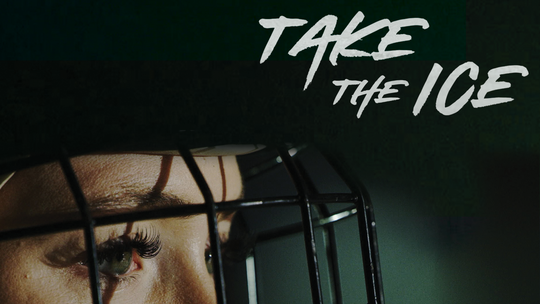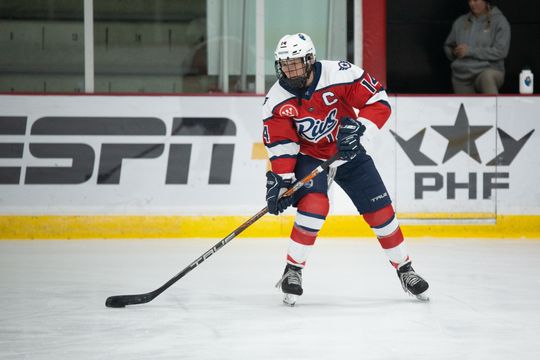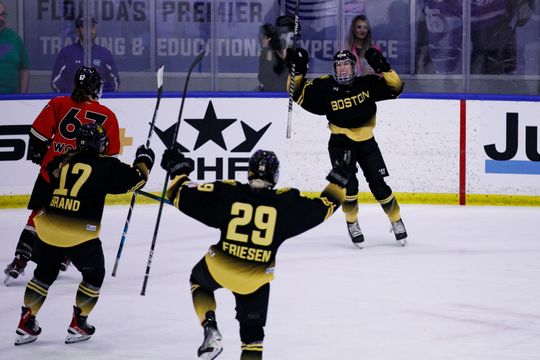Playing in a Winter Classic was a dream for both leagues -- as well as for commissioner Dani Rylan and her fledgling NWHL, and Brenda Andress, whose CWHL has already partnered with NHL teams. The NHL brought both leagues together for the Outdoor Women's Classic, an official NHL event under the 2016 Winter Classic umbrella, on December 31, 2015.
"This year with the new league, the National Women's Hockey League, coming on board, it was an opportunity, I think, for the NHL to take a look at bringing women's hockey to a new plateau. We got together and made it work," Andress said.
The game featured two 15-minute periods with running time. The format was a byproduct of a short time frame for the game, Andress said.
"Our women will damage the ice just as much as the guys will," Andress said. "I mean, they’re strong, powerful skaters. Get them in here, get them off, get the opportunity for the game to be seen, promote the game, move it forward."
Despite rumors circling in early December that the Boston Pride and Les Canadiennes would be involved in the outdoor game at Gillette Stadium, an official announcement wasn't made until December 28.
Both Rylan and Andress cited logistical issues, such as insurance, for the delay.
"[There are] so many little things that you may not think about that go into it," Rylan said. "I think the NHL has been very supportive and also very forthcoming, and saying if they’re going to do it they want to do it right and they wanted to make sure they had all their T's crossed and I's dotted."
Rylan then said she found out the game was official right before Christmas, but the announcement was delayed because the confirmation came during the holidays.
In theory, the event was monumental for women's hockey. But in reality, lack of exposure and a delayed announcement rendered this game as something anticlimactic, though still a nostalgic event for the players, teams, and leagues.
The first issue with the Women's Outdoor Classic comes from the delayed announcement. Holding off of making an announcement "because it's the holidays" benefited no one. Members of the women's hockey community, whether media or fans, have been waiting for an announcement since rumors began and wouldn't have missed an official statement.
While there's a lot that goes into creating a massive event like an outdoor game -- from creating and maintaining the ice surface to necessities like proper insurance -- the Women's Outdoor Classic was an NHL event. And the NHL has produced many Winter Classics and outdoor games over the past few years, which means they should have a fundamental understanding of what goes into the process of planning and staging an event like this.
The delay itself caused many problems. It prevented fans from attending the game, limited time to promote the event and, as the media were told, was a main reason for the lack of broadcasting the Women's Outdoor Classic.
The lack of broadcasting and promotion is essentially why this event failed.
Yes, failed.
Andress said that this event was a promotional opportunity: "Get them in here, get them off, get the opportunity for the game to be seen, promote the game, move it forward."
The purpose of this event was exposure for professional women's hockey. Yet there was no broadcast and no official live stream. There was barely any mention of the event on the NHL broadcasts or social media channels.
During the pre-game media availability, I asked Andress directly where the exposure would come from without live streaming or an official broadcast. She said:
Well, you’re all talking to me, right? Every time you turn around, somebody’s asking about this great game. The NHL is putting it out massively on everything they do. We are, the [NWHL] is putting it out massively on their PR. So is it going to be streamed? No. Of course we’d like it to be streamed, but again Step 1. The exposure in itself has been phenomenal, so, yes you know, we all want something better. All the time, we want more. But I think in the first step, this has been great and I think the NHL has done a great job of doing it. They’re talking about it, they'll take clips of it, we're taking clips of it, I think probably Dani in the NWHL is taking clips of it, so it’ll be very well-exposed, and just the simple fact that people are talking about it is great.
However, the NHL did nothing to promote this game, and most of the reporters talking to Andress during her media availability were already women's hockey reporters.
The amount of exposure was minimal, especially considering the resources that were available.
Andress mentioned the media coverage as part of the exposure. There were several outlets that covered the event, but Sportsnet and ESPNW focused on Denna Laing's injury. CBC, The Boston Globe, and NESN only provided short recaps. SB Nation gave three takeways, while both the New York Times and Puck Daddy published longer stories.
And then, of course, there was a story about women's hockey winning (which is certainly debatable).
There was coverage, but little of that coverage was extensive, or even discussed the women's game as something other than a novelty.
The promotion mainly came from the women's hockey media, fans, and the CWHL/NWHL players and teams. Both leagues and their players did do a phenomenal job of promoting the event through social media -- but the NHL, with its massive social media reach, did not.
There was barely a mention of the game, no pointing towards the CWHL and NWHL league accounts, and no in-game updates.
I looked through the NHL's Twitter feed from the day of the event. There was a tweet about the World Junior Championship, a video of Patriots interviews, some Winter Classic photos and preview stories, the NHL scavenger hunt, other NHL news -- and extensive Winter Classic practice coverage.
The NHL did tweet a short link to all the events happening at Gillette Stadium that day. The Outdoor Women's Classic garnered two paragraphs in the NHL's release. The league also retweeted a post from the Scotia Hockey Club about puck dropping on the Women's Winter Classic. And the NHL tweeted when the gates opened for both the women's game and the alumni game. There were also many, many posts from the NHL about the alumni game.
The NHL has an obligation to provide coverage for its league. As a result, the Winter Classic stories, league scores, and pictures are all warranted. But the Women's Outdoor Classic -- which was an NHL event -- barely received any tweets and no Instagram posts.
The NHL's poor social media promotion of the Women's Outdoor Classic simply cannot be blamed on a lack of preparation time. It's easy to take a picture from the press box and Tweet it or post it to Instagram. It's not even time-consuming to post a short in-game update, or at the very least, link to the CWHL and NWHL accounts. That kind of coverage requires no advance planning.
Without a PR push from the NHL, both the CWHL and NWHL struggled to gain any exposure to new fans. But the biggest reason the exposure fell flat was the lack of broadcasting.
Susan Cohig, an NHL VP, was supposed to be available to the media before the Women's Outdoor Classic. But Cohig wasn't. Last week, Cohig was interviewed by Puck Daddy's Jen Neale, where Cohig spoke of the lack of broadcasting. But her answers were unsatisfying and filled with buzzwords.
Cohig's answer is lengthy, but here is some of it:
We’re not because with this particular game … it’s the first time we’ve actually had a game, a women’s game, on the ice. We have a really tight window, and for us, we want to do it right. It would be tremendous if we could add that component, but quite honestly, I just want to make sure we do it right. We do it well and because we have such a tight window, because ice quality when you do an outside game is so tricky. I wouldn’t want to do anything that would create an issue for the ice for the Alumni game that takes place two hours later, and more importantly, the Winter Classic.
This quote indicates that the Outdoor Women's Classic was automatically considered to be less important than retired NHLers skating around outside, or than an extravagant outdoor game that's grown stale. Then, Cohig cites the now-popular refrain that the NHL wanted to "do it right." Just like announcing the event three days before it taking place was also, supposedly, doing it right. Cohig also said the league didn't want to stream the game, in case they had to cancel the game at the last minute.
One of Cohig's answers showed what this game was actually about. The NHL wasn't in it for exposure (or maybe to pretend like they were helping women's hockey exposure). It was really for the player experience, nothing else -- perhaps to generate goodwill among players, staff, and executives from all three leagues. This isn't necessarily a bad motivation, but to sell the aspect of "exposure" seems disingenuous, especially in retrospect:
What we’re doing first, before they drop the puck and before they do warmups, we’re going to do team photos on the ice so each one of them will have it. I just want to see that. I want to see the looks on their faces because I can’t imagine. I’m not a hockey player. I know what it’s like to skate on an NHL rink, but to be at the top of your game and be able to be on that ice, part of a team photo, I hope it’s great for them. And we want to be able to create those memories and experiences.
The NHL also placed the women's game in a prime spot for exposure. Andress said the game was scheduled for 2 PM so that fans attending the alumni game would trickle in early and get to see the women's game as well. In theory, this was a great idea. But not many fans showed up early.
And on the TV side, the NHL had a great opportunity to catch fans who had tuned in for practice and hadn't switched off their TVs, as well as fans who tuned in early for the alumni game.
On Friday, Victory Press editor Zoë Hayden and I wanted to watch the Winter Classic, but we turned on the TV about half an hour early and ended up watching the Rose Parade. We didn't want to watch the Rose Parade, but we kept watching because we were early and it was on TV. And we even remembered information from the Rose Parade.
That's how you get exposure.
This was what Rylan said on the lack of a TV deal:
Since this did kind of come together last minute, so to speak, there wasn’t an opportunity to line up a television deal. But I think with enough planning, it’s something that our fans really push for, and I think it’s been noted across all camps that this is something that we’re going to have to set up for next year.
The short notice most likely does factor in setting up broadcasting. However, the NHL already had its cameras in place for both practices and for the alumni game. The NHL Network was also broadcasting a show after practice from Gillette Stadium, just in front of the ice. You could actually see the Pride and Les Canadiennes skating in the background. Yet they never showed any of the action or even mentioned that it was taking place.
The oddest part is both leagues stream their games. The CWHL also had its You Can Play game (a tilt between the Toronto Furies and the Brampton Thunder) televised on Sportsnet, while the NWHL has had some games on NESN and ESPN3. The CWHL and NWHL fans couldn't even see their own players, leagues, and teams make history at the Outdoor Women's Classic.
If no one can see the premier women's hockey game, no new fans will even have the chance to see the game.
That's where the NHL failed.
When the coaches finally came out to talk to the media after the game, the CWHL and NWHL players were smiling and laughing to the side, clad in Winter-Classic-branded hats and jackets.
"It was unreal," Les Canadiennes' Julie Chu said. "I think as we were getting ready for the game, we were just a bunch of little kids, like in the locker room, on the bus ride down from Montreal, even as we were approaching the ice and on the bench. I'd like to say we were totally focused, and we were, but I think there was a big kid in us that came out and it was awesome."
Her teammate Marie-Philip Poulin felt the same way.
"This is how we fell in love with the game: outside," Poulin said.
"It was way more than I could have ever imagined," Boston's Marissa Gedman said. "I've been to Gillette thousands of times throughout my childhood. My family breathes, eats, sleeps Boston sports. It was a dream come true. We all talked about how there was this huge buildup, and then you walk out there, and no preparation could have prepared us for that moment when your heart just swells."
Those are the memories we want to keep. We also wish the best for Denna Laing, whose terrible injury in the first period of the game was also a reminder that our favorite sport is often unsafe.
I can't speak for what the players felt; I can only relay what they told us. I can tell you from a journalist's perspective, especially growing up as a huge Patriots fan, it was an amazing, once-in-a-lifetime experience. Nothing compares to walking into Gillette, looking down at the field and the setup, and stepping into that press box.
I'm not unhappy with the event, overall. I was very happy with it, and the product on ice was phenomenal. Both Rylan and Andress said this outdoor game was a big step for women's hockey.
"This is an unbelievable milestone for women’s hockey to have the opportunity to be on such a grand stage," Rylan said. "I know that the players and all of our staff are extremely excited for today."
It did, at times, feel magical. The NHL, NWHL, and CWHL managed to save the game, at the end. We can only hope that the parts that felt so magical are what motivates the leagues to work together again in the future to bring more fans to women's hockey.
We need live streaming and TV and real exposure. We need that third period.
